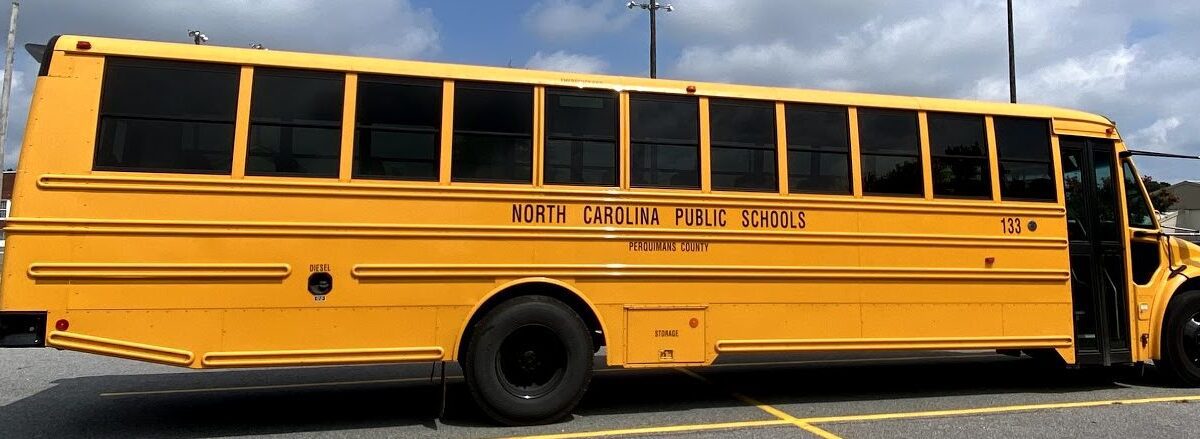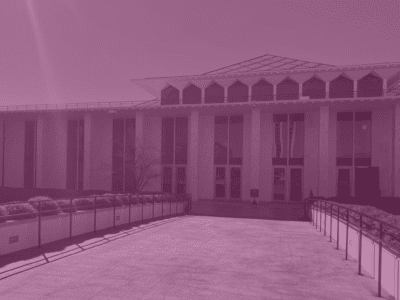

The distinctively yellow, ubiquitous buses have a straight-forward, practical purpose: to transport young people daily and safely to and from school. They are such a familiar presence that what’s written on the side of the buses goes largely unnoticed.
“NORTH CAROLINA PUBLIC SCHOOLS,” says the top line in a basic bold typeface. A second line, in smaller type, names the county. The design is as conventional and utilitarian as the bus itself.
And yet, what’s written on the side of school buses is subtly symbolic, too. It signifies the centrality of the state in the governance and financial support of public education in North Carolina. Even as buses help enhance everyday family lives, the unadorned wording makes plain the importance to parents and children of the far-reaching set of decisions now in process in the General Assembly.
Across much of the United States, public schools are operated and funded by local units of government largely through property taxes. Elsewhere, school buses carry the names of a city, county, township, or education district.
In contrast, North Carolina’s 115 local school units have long operated within a state public education system. This system, with historical roots in both Reconstruction and the Great Depression, is shaped by the North Carolina Constitution and the General Fund budget.
In the Constitution’s Declaration of Rights, Section 15 gives the state the duty to “guard and maintain” the right to the “privilege of an education.” The Constitution has a full article on education, providing for a “uniform system of free public schools.” Still unresolved is whether the state legislature will respond adequately to court rulings, across decades of Democratic and Republican majorities, that North Carolina has too many students in low-performing schools to assure their constitutional right.
The state provides 60% of the annual expenditures for K-12 schools in North Carolina, local governments nearly 24%, and federal assistance 16%, not counting child nutrition funding. K-12 education represents 43%, the largest share among major government functions, of General Fund appropriations.
On an average school day in North Carolina, 795,000 students ride a bus to and from their schools. There are 14,100 school buses operating daily; all told, North Carolina’s buses travel more than 181 million miles per year.
The yellow buses with, “NORTH CAROLINA PUBLIC SCHOOLS” painted on their sides stand in contradiction to the simplistic rhetoric heard these days that the legislature should “fund students, not systems.” After all, to deploy 14,000 vehicles each school day requires “systems” for managing and maintaining the fleet, for mapping and scheduling routes, and for adopting regulations and enforcing laws to assure safety on the road and at bus stops.
In “A Brief History of the School Bus,” Smithsonian magazine depicts the bus “as traditional as the ABCs.” The color, says the Smithsonian, “first known as National School Bus Chrome, was later dubbed National School Bus Glossy Yellow and is, technically, Color 13432… The exterior of the American school bus has remained much the same since 1939.”
The Smithsonian essay also says the yellow bus is “long a vehicle for equality of access to education.” Well, not always. During the Jim Crow period in North Carolina and other Southern states, buses transported young students to racially segregated schools, often bypassing the nearest school. In the early 1970s, in a case arising from Charlotte-Mecklenburg, federal courts ruled that busing could be used as a tool for school integration. Court busing orders, widely controversial, have subsequently been lifted, while buses remain a vital element of public education infrastructure.
During the recent COVID-19 pandemic, school buses were deployed for necessary yet unconventional purposes during stay-at-home, virtual classes. Buses served as mobile hot spots for students to connect to the internet. School buses delivered meals to students and their families.
Now the buses have returned to their more conventional purposes — to deliver students to public schools. But if the buses are of a standard color, the schools have moved well beyond critics’ depiction of them as “one size fits all.”
Today, public education consists of an array of choices for parents and students: magnets, year-round schools, laboratory schools, career academies, charters, and early colleges. The writing on the buses —NORTH CAROLINA PUBLIC SCHOOLS — signifies the central role of public education, with its array of opportunities, in propelling a state and its next generation.


